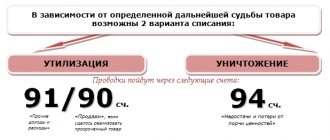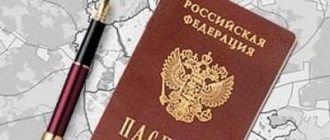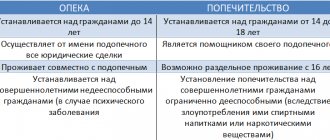When purchasing food products at a retail outlet, the client always expects that he is purchasing unspoiled products that have not expired and are suitable for consumption.
However, it also happens differently: despite the legal prohibition, the seller may put up for sale expired or simply low-quality products, which will ultimately land the consumer in a hospital bed.
To avoid unpleasant developments, when purchasing any food product, carefully study its expiration date and, of course, if it has already expired, or is close to it, do not purchase such food. Below we will tell you how to calculate the shelf life of products intended for food.
What is expiration date and how is it determined?
According to experts, the expiration date is the time period during which the product must be used. As Lyudmila Vikulova, director of the research department of Roskachestvo , explains, expiration dates are specified in technical regulations and SanPiN for each subgroup of products; after their expiration, the products cannot be consumed. The manufacturer also cannot arbitrarily change the expiration date.
If the product contains several components, then the shelf life is determined by the ingredient with the shortest shelf life. The shelf life of goods sold by weight is calculated from the date of manufacture. Perishable products (ready-made salads, fresh fish, semi-finished chilled meat products, etc.) retain their consumer properties from 12 hours to 3 days and only in a chilled state.
Accordingly, the manufacturer is obliged to indicate the exact production date on the packaging (not only the year and month, but also the day and hour).
“By indicating an expiration date, the manufacturer thereby guarantees the quality of the product and is responsible for its safety during the expiration date specified by him,” explains Doctor of Technical Sciences, Professor Anastasia Semenova.
Look at the label! How to distinguish unhealthy foods from healthy ones? More details
The supplier's conditions on the quality of the goods are 2/3 of the terms when sending or receiving the goods?
I would like to consult with you on this question;
I have a company in Moscow and am starting to cooperate with another company from another city (St. Petersburg), according to the principle (contractual basis), I have a huge request to you: After reading this agreement (which I have to sign or not sign), help me please understand this agreement and identify (if any) all the “pitfalls” in this agreement, what guarantees do I have that my funds will not become the profit of some very clever fraud, can I insure my funds in some insurance company or in some way suggested by you, as well as all kinds of precautions that I would need to take if you were in my place. Thank you very much in advance. Regards, Alexey.
AGREEMENT N for the supply of goods in St. Petersburg “___” 2008
LLC "" hereinafter referred to as the "Supplier", represented by the General Director, acting on the basis of the charter, on the one hand, and, hereinafter referred to as the "Buyer", represented by the person acting on the basis of the other hand, have entered into this agreement as follows:
1. THE SUBJECT OF THE AGREEMENT
1.1. The Supplier undertakes to transfer ownership to the Buyer, and the Buyer - to accept and pay (hereinafter referred to as the “Goods”) in quantity and assortment in accordance with the Buyer’s orders accepted by the Supplier.
1.2. The range of Goods and the price at which the Supplier undertakes to supply the Goods under this agreement are indicated in the Specification (Appendix No. 1 to the agreement), which is an integral part of this agreement.
1.3. The Specification may indicate the period during which the agreement reached by the parties on the price of the Goods will be valid.
1.4. The quantity and price of the delivered Goods are indicated in the invoices.
1.5. Ownership of the Goods passes to the Buyer at the time of transfer of the Goods to the Buyer or the carrier (in the case of delivery of the Goods to a railway station within the administrative boundaries of the city).
1.6. The risk of accidental death is borne by the owner of the Goods in accordance with the current civil legislation of the Russian Federation.
1.7. In the event of delivery of incomplete goods or goods of a non-conforming assortment, the Buyer has the right to refuse both incomplete goods and goods that do not meet the assortment conditions and all goods transferred at the same time. Such a refusal is not considered a refusal to fulfill an obligation and does not entail termination of the contract.
1.8. If the Buyer has not refused goods that do not comply with the assortment condition, and the delivery of goods of this name according to the contract must be carried out in the following delivery periods, then these goods must be counted against the volumes of these periods.
1.9. The goods are purchased by the Buyer for.
1.10. The supplier guarantees:
— compliance with proper storage conditions for the Goods before their transfer to the Buyer;
— compliance with the requirements of regulatory documents in relation to materials and products imported into the territory of the Russian Federation;
— proper implementation of production quality and safety control, compliance with the requirements of regulatory and technical documents for the conditions of production and circulation of Goods;
— availability of mandatory Russian Federation certificates for imported goods.
1.11. The Parties determine the carrier in the specifications.
2. PRODUCT PRICE
2.1. After receiving the Buyer’s order and if the required quantity of the Goods is available in the warehouse, the Supplier issues an invoice to the Buyer for payment for the Goods.
2.2. The price of the Goods is indicated in the invoices and is valid for the period specified in the Specifications (Appendix No. 1 to the contract), and if the period is not specified - during the validity period of this contract or until the parties sign a new price agreement.
2.3. The price of the Product is indicated in conventional units and does not include VAT.
For the purposes of this Agreement, the Parties understand a conventional unit.
2.4. Payment is made by the Buyer in rubles at the exchange rate of the Central Bank of the Russian Federation on the date of invoice.
2.5. The Buyer has the right to receive discounts on the supplied Goods in cases established by the Supplier.
2.6. Upon expiration of the agreement on the price specified in the Specification, the Supplier notifies the Buyer of new prices for the Goods, which are fixed in an additional agreement of the parties. If the Buyer does not agree with the new prices for the Goods, the contract is considered terminated when the Supplier receives the Buyer’s written refusal to sign an additional price agreement or, in the absence of a written refusal, after 30 days from the date the Supplier sent a proposal with new prices.
2.7. An increase in the price of the Goods by the Supplier without notifying the Buyer 5 working days before the effective date of the new prices is not allowed.
2.8. In the case provided for in sub. 5.4.1 of this agreement, delivery of the Goods is carried out at the expense of the Supplier, and all costs for payment for delivery of the Goods by rail, road, air or river transport are borne by the Buyer of the Goods.
3. PAYMENT PROCEDURE
3.1. The Buyer pays for each batch of Goods on an advance payment basis in the amount of 100%.
3.2. Payments for the delivered Goods are made by transferring non-cash funds by the Buyer to the Supplier's bank account or depositing funds into the Supplier's cash desk within the limits established by the current legislation of the Russian Federation.
3.3. The Buyer's obligation to pay for the Goods is considered fulfilled after funds are credited to the Supplier's account.
3.4. The Supplier has the right to demand from the Buyer, as confirmation of payment for the Goods, a copy of the payment order with the bank’s mark on execution.
3.5. The Buyer undertakes to pay for the Goods within 3 banking days from the date of receipt of the invoice from the Supplier.
4. RIGHTS AND OBLIGATIONS OF THE PARTIES
4.1. The supplier is obliged:
4.1.1. Within 10 days from the date of receipt of funds in payment for the Goods to the settlement account or cash desk, notify the Buyer about the availability of the Goods ready for shipment at the Supplier’s warehouse or deliver the Goods to the Buyer’s warehouse or to the railway station, bus station, airport, river station (depending on terms of delivery of the batch of Goods).
4.1.2. Transfer to the Buyer the Goods of proper quality and in the quantity and assortment stipulated by this agreement.
4.2. The buyer is obliged:
4.2.1. Pay the cost of the delivered Goods.
4.2.2. Carry out, within the time limits established by this agreement, the inspection of the Goods in terms of quantity, assortment and quality.
4.2.3. Provide an authorized representative to sign the necessary documents (invoices, document acceptance certificate, etc.).
5. TERMS OF DELIVERY OF GOODS
5.1. Delivery of the Goods is carried out in batches based on the Buyer’s orders and subject to full payment for the Goods by the Buyer.
5.2. The Buyer's order must contain the name (assortment), quantity of the Goods, delivery conditions and the address to which the Goods should be delivered.
5.3. Specified in paragraphs. 5.1 - 5.2 of this agreement, the Buyer’s order can be made either in writing, including by fax or email, or by telephone.
5.4. Delivery of the Goods is carried out:
5.4.1. Delivery of the Goods to the Buyer’s warehouse within the administrative boundaries of the city or to a railway station, bus station, airport, river station in the city with delivery of the Goods to the carrier.
5.5. In the case provided for in sub. 5.4.1 of this agreement, the unloading of the Goods is carried out by the forces and means of the Buyer or the carrier to whom the Goods are transferred. In this case, the Supplier is not responsible for damage to the Goods during unloading.
5.6. The Goods are shipped in the quantity and assortment specified in the invoices for the Goods.
5.7. The Supplier's obligations to supply the Goods are considered fulfilled from the moment the Goods are handed over to the Buyer's authorized representative or the cargo carrier, which is confirmed by the date indicated in the delivery note.
5.8. The packaging of the Goods must ensure its safety during transportation, provided that it is handled with care.
5.9. If the Buyer violates the deadline specified in clause 3.5 of this agreement, delivery is carried out only if the relevant Goods are available at the Supplier’s warehouse. Otherwise, the Delivery period is extended by the time the relevant Product arrives at the Supplier's warehouse, or the parties consider the possibility of replacing the undelivered Product with another product available at the Supplier's warehouse.
6. ACCEPTANCE OF GOODS
6.1. Acceptance of the Goods in terms of quantity, assortment and presentation is carried out during the transfer of the Goods to the Buyer.
6.2. In the event of a discrepancy between the quantity, presentation or assortment of the Goods and the Buyer’s order, a note must be made in the invoice regarding the actually accepted quantity and assortment of the Goods.
6.3. In the event of a shortage of Goods, the Supplier shall compensate for the shortage upon subsequent deliveries of the Goods.
6.4. When the Goods are delivered to the Buyer’s warehouse and in the event of his refusal to accept the Goods, an act is drawn up, signed by authorized representatives of the parties, in which the Buyer is obliged to indicate the reasons for the refusal, the position and surname of the person who accepted the Goods.
6.5. If the Buyer refuses to draw up the act provided for in clause 6.4 of this agreement, the fact of refusal is certified by a unilateral act drawn up by a representative of the Supplier.
6.6. During acceptance, the Buyer checks the availability of information in Russian on the Product and transport packaging about the composition, manufacturer, expiration dates, storage and use conditions, as well as other established information.
6.7. If a supply of goods is detected in a quantity exceeding that specified in the application, the Buyer, at his option:
— pays for the goods at the price specified for this product in the invoice, no later than 5 days from the date of acceptance of the goods. In case of delay in payment for the goods, the Buyer shall pay a penalty in the amount of 0.5% of the amount of the goods for each day of delay. For tax purposes, penalties are taken into account after actual payment or after the court decision enters into force;
— accepts goods for safekeeping. The supplier is obliged to dispose of such goods no later than 5 days from the date of acceptance of it for safekeeping.
6.8. If quality defects are detected, the Buyer notifies the Supplier in writing (by fax or telegram) within 2 days from the moment the defects are discovered. The Supplier sends its representative to the Buyer, who, together with the Buyer’s representative, draws up a report on the defective product and its replacement.
6.9. Until the defective goods are exported, the Buyer accepts the goods for safekeeping. The supplier is obliged to remove the defective product no later than the day on which the replacement product is delivered.
7. PRODUCT QUALITY
7.1. The Supplier guarantees the quality of the Goods and compliance with proper storage conditions for the Goods before their transfer to the Buyer.
7.2. The quality of the Goods supplied under this agreement must comply with the requirements of GOSTs and TUs approved for this type of Goods, as well as certificates of conformity.
7.3. Upon delivery of the Goods, the Supplier transfers to the Buyer, according to the acceptance certificate, all the necessary documents confirming the quality of the Goods.
7.4. If a Product of poor quality is discovered during its sale through the Buyer's retail network and provided that the defects of the Product could not be identified by the Buyer within the period specified in clause 6.1 of this agreement, the Buyer is obliged to immediately notify the Supplier of the identified defects of the Product. Calling the Supplier's representative is required.
7.5. Upon discovery of a defective Product, a complaint report is drawn up, which is signed by representatives of the Buyer and Supplier.
7.6. If the Supplier disputes the fact of delivery of the Goods of inadequate quality, the parties engage an independent expert to identify the manufacturing or other nature of the defects in the Goods. Payment for the expert’s services is carried out at the Buyer’s expense, and if the examination of the Goods confirms that the inadequate quality of the Goods arose through the fault of the manufacturer of the Goods or the Supplier, that is, until the Goods are transferred to the Buyer, then the costs of paying for the expert’s services must be reimbursed by the Supplier.
7.7. The Supplier is responsible for defects in the Goods if the Buyer proves that the defects in the Goods arose before its transfer to the Buyer or for reasons that arose before that moment. In this case, the Supplier undertakes to replace the Product of inadequate quality within 14 days from the date of signing the complaint report or receiving the opinion of an independent expert.
7.8. Replacement of low-quality Products is carried out if a similar product is available at the Supplier's warehouse. In the absence of a similar product, the parties, by agreement, decide on the possibility of replacing it with another product or returning the money.
8. RESPONSIBILITY OF THE PARTIES
8.1. For failure to fulfill or improper fulfillment of obligations under this agreement, the parties are liable in accordance with the current legislation of the Russian Federation.
8.2. Neither party to this agreement is liable to the other party for failure to fulfill obligations caused by circumstances that arose against the will and desire of the parties and which cannot be foreseen or avoided, including declared or actual war, civil unrest, epidemics, blockades, earthquakes, floods, fires and other natural disasters, acts of government bodies and actions of authorities.
8.3. A document issued by the relevant competent authority is sufficient evidence of the existence and duration of force majeure.
8.4. A party that fails to fulfill its obligation due to force majeure must immediately notify the other party of the obstacle and its impact on the performance of obligations under the contract.
9. DISPUTE RESOLUTION PROCEDURE
9.1. All disputes and disagreements between the parties arising during the validity period of this agreement are resolved by the parties through negotiations.
9.2. In case of failure to resolve disputes and disagreements through negotiations, the dispute shall be resolved in the Arbitration Court of St. Petersburg.
9.3. In all other respects that are not provided for in this agreement, the parties are guided by the current legislation of the Russian Federation.
10. TERM OF THE AGREEMENT
10.1. This agreement comes into force from the moment it is signed by the parties and is valid until “___”, and if by this time the parties have unfulfilled obligations arising from this agreement, the term of the agreement is extended until the parties fully fulfill their obligations.
10.2. The contract may be terminated early by agreement of the parties or after 5 days from the date one of the parties submits an application to terminate the contract, provided that the parties fully fulfill their obligations under this contract.
11. FINAL PROVISIONS
11.1. This agreement is drawn up in two copies having equal legal force, one copy for each of the parties.
11.2. Facsimile copies of this agreement and the documentation attached to it are considered legally correct on a par with the originals. After concluding the agreement and its annexes with fax execution, the parties must exchange original documents within 30 days.
11.3. Any changes and additions to this agreement are valid provided that they are made in writing, signed by duly authorized representatives of the parties and sealed.
12. ADDRESSES AND DETAILS OF THE PARTIES
Provider
Buyer
CEO.
What is the shelf life?
The shelf life of products is the period from production to consumption or use. So, for example, if a product has a shelf life of two months, and you bought it in a store and saw that it was produced two weeks ago, this means that its shelf life was two weeks, and until the expiration date, accordingly, 1. 5 months. The shelf life should not exceed the expiration date.
All those products that can be stored for longer than a month are considered shelf-stable products, but their shelf life may vary and depend, among other things, on storage conditions. For example, if dried fruits are stored in a dark, dry and ventilated place, they can retain their properties for up to a year, and flour, salt, tea, sugar and some types of canned food can last for two years if the packaging has not been opened. If storage conditions are not observed, food may spoil faster.
How long do non-perishable foods stay fresh?
Most of the products offered by the manufacturer are non-perishable, that is, they can be stored for a relatively long time.
However, no special storage conditions are specified, including temperature, humidity, etc. The only condition is to preserve the consumer properties of the products.
What is the difference between expiration date and shelf life?
Read about returns and exchanges of food products here.
How to correctly read the expiration date of products, read the link:
The following types of non-perishable products can be distinguished:
- Canned food. Their storage time is defined as the interval between the final packaging and its opening (loss of integrity);
- Flour. It should be stored in rooms with low humidity, preferably well ventilated. Depending on the type of flour and the temperature at which it is stored, the shelf life can be 2 years or even more;
- Bulk materials (salt, tea, sugar). They, subject to all conditions, can be stored for no more than 2 years;
- Dried vegetables and fruits. Their maximum shelf life, subject to temperature and humidity conditions, is 1 year;
- Vinegar, spices and herbs. For vinegar, the shelf life can be up to 1 year (if we are talking about an apple or wine product, then up to six months). For ground spices, the specified period is 3 years, for dried products – up to 4 years.
Alcohol products deserve special coverage:
- For wine, properly produced, bottled and sealed in accordance with sanitary and hygienic rules, the shelf life is practically unlimited, and can be tens of years. After opening the bottle, it is recommended to store the alcoholic product for no more than four days, since the wine, interacting with air, actively oxidizes;
- If we are talking about cognac, then the recommendations are as follows: a properly produced, packaged and stored product can be stored, like wine, for many years. In this case, the recommended storage temperature is up to 15°C. If the bottle has already been opened, it is best to drink the cognac before 2 or 3 months have passed;
- As for champagne, it is usually stored differently than the manufacturer suggests, as a result of which both physicochemical and taste properties sharply deteriorate. Thus, you should not trust the expiration date indicated on the label, which is usually 3 years, and do not purchase champagne that is older than 1 year. Due to its characteristics, it is better to drink already opened wine as soon as possible;
- Whiskey, due to its high alcohol content, can, like cognac, be stored indefinitely, however, with one condition: the room temperature should not exceed 5°C. Otherwise, although the product does not become hazardous to health, it loses its taste;
- Vodka is one of the most popular alcoholic products. Provided there are no impurities, when the drink contains only purified water and alcohol, vodka can be stored for an unlimited amount of time. However, very often the above-mentioned drink is produced with various flavoring additives, which reduce the shelf life of the product by up to 1 year. There are, among other things, currently non-mandatory GOST standards, according to which the maximum shelf life reaches 3 years. After this, of course, you can drink the drink, but, according to experts, its taste changes greatly for the worse.
Why are foods past their expiration date unsafe to eat?
Products that have reached or are approaching their expiration date should not be eaten. By this time, pathogenic microorganisms begin to multiply in them. In addition, it is unknown whether all storage rules were followed at retail outlets. Gastroenterologist-immunologist Nadezhda Korolkova also does not advise buying products on sale in stores, since their prices are often reduced precisely because of non-compliance with the cold regime.
“You should also be wary of packages with sealed, hard to read, or smudged expiration dates. Such markings, as a rule, reveal an unscrupulous seller, and the product itself may be of dubious quality and unsafe,” says the specialist.
Those who survived their time. Is it necessary to crush expired food with bulldozers? More details
Consumer requirements when detecting product defects during the shelf life
In accordance with paragraph 1 of Art. 19 of the Law, the consumer has the right to present the requirements provided for in Article 18 of the Law to the seller (manufacturer, authorized organization or authorized individual entrepreneur, importer) regarding defects in the goods if they are discovered during the warranty period or expiration date.
Thus, a consumer, for example, of a certain food product or cosmetics, who discovers defects in the product during the established shelf life, has the right to demand its replacement with a product of the same or another brand with a recalculation of the purchase price or, for example, refuse to fulfill the sales contract and demand a refund of the amount paid for the goods.
In the event that expiration dates have not been established , the consumer has the right to present the requirements provided for in Art. 18 of the Law, if defects in goods are discovered within a reasonable time, but within two years from the date of their transfer to the consumer, unless longer periods are established by law or contract.
If a product was sold to a consumer after its expiration date , then only the seller can make a claim, since it was he who sold the expired product.
Lack of cash or sales receipt . If, for example, it turns out that a consumer purchased an expired or a product of poor quality, but the cash receipt confirming the purchase was not preserved, this does not mean that there is no point in filing a claim. In accordance with paragraph 5 of Art. 18 of the Law on the Protection of Consumer Rights, the absence of a consumer's cash or sales receipt or other document certifying the fact and conditions of purchase of goods is not grounds for refusal to satisfy his demands.
In accordance with Art. 493 of the Civil Code of the Russian Federation, the absence of a consumer’s cash or sales receipt, electronic or other document confirming payment for goods does not deprive him of the opportunity to refer to witness testimony in confirmation of the conclusion of the contract and its terms.
Thus, if the consumer does not have a cash receipt, but has justified claims to the seller or manufacturer, then the consumer must obtain testimony from persons who can confirm that the consumer actually purchased the goods from this seller. These may be acquaintances who were near the consumer at the time of purchase or saw the consumer leaving the store with the purchase.
Is it worth “reanimating” spoiled products?
It is better to throw away spoiled products. Even if, for example, you cut mold from bread or cheese, this will not make the product safe: it does not spread only on the surface of the product, but its hyphae (mycelial legs) penetrate deep inside. Therefore, even a small stain of mold on a product already means that it is unfit for food. The most common and dangerous mold is Aspergillus. It appears as a fluffy coating (can be white, yellow or green) on wheat, rye, rice, jams, dried fish, peanuts, legumes, fruits and vegetables.
Experts warn that you should also not prepare, for example, cheesecakes from spoiled cottage cheese. “Indeed, at a temperature of 100-130 ° C, almost all mushrooms die, except for the spores of some varieties of thermophilic baker's yeast. However, it is important to know that heat treatment almost does not destroy mycotoxins, that is, fungal waste products that are toxins for humans,” says Korolkova.
The expert warns that you should not use partially spoiled berries and fruits to make jam, compotes or baking fillings, since even their healthy parts can be contaminated with mycotoxins.
Responsibility for selling expired goods
Clause 5 of Art. 5 of the Law prohibits the sale of goods (performance of work) after the expiration of the established expiration date , as well as goods (performance of work) for which an expiration date should be established, but it is not established. Such a product is considered unfit for use. This does not mean that if such a product is used, the consumer will necessarily suffer harm. However, potential danger exists.
The ban on the sale of expired goods is ensured by the norms of the Code of Administrative Offenses of the Russian Federation and the Criminal Code of the Russian Federation.
Administrative liability for violation of the rule of paragraph 5 of Art. 5 of the Law “On Protection of Consumer Rights” is provided for by the following articles and the Code of Administrative Offenses of the Russian Federation:
- Article 14.4 of the Code of Administrative Offenses of the Russian Federation. “Sale of goods, performance of work or provision of services to the population of inadequate quality or in violation of the requirements established by the legislation of the Russian Federation”;
- Article 14.5 of the Code of Administrative Offenses of the Russian Federation “Sale of goods, performance of work or provision of services by an organization, as well as by a citizen registered as an individual entrepreneur, in the absence of established information about the manufacturer (executor, seller) or other information, the mandatory provision of which is provided for by the legislation of the Russian Federation”;
- Article 14.8 of the Code of Administrative Offenses of the Russian Federation “Violation of other consumer rights” covers a wide range of offenses: clause 1 of this article provides for liability for violation of the consumer’s right to receive necessary and reliable information about the product (work, service) being sold, about the manufacturer, about the seller, about the performer and about their mode of operation.
Criminal liability for violating the rules of paragraph 5 of Art. 5 of the Law on the Protection of Consumer Rights is provided for by Article 238 of the Criminal Code of the Russian Federation, according to which a crime is “the production, storage or transportation for the purpose of distribution or sale of goods and products, performance of work or provision of services that do not meet the requirements for the safety of life or health of consumers, as well as unlawful issuance or use of an official document certifying the compliance of specified goods, works or services with safety requirements.”
Is the expiration date of sausage valid up to and including the designated date?
I bought the sausage on October 18. The production date is written as 09/28/17. Expiration date is 10/18/17. Has the deadline expired?
October 21, 2021, 09:14, question No. 1787200 Vera, Moscow Collapse Online legal consultation Response on the site within 15 minutes Answers from lawyers (3) 894 answers 339 reviews Chat Free assessment of your situation Lawyer, St. Petersburg Free assessment of your situation Hello, Vera! Regarding your question. I bought the sausage on the eighteenth of October. The manufacturing date is written as 09.28.17. Expiration date is 10.18.17. Has the deadline expired? Decision of the Customs Union Commission dated 05.28.2010 N 299 (ed.
dated August 29, 2017) “On the application of sanitary measures in the Customs Union” 2.4. REQUIREMENTS FOR MANUFACTURING, PACKAGING AND LABELING - expiration date, indicated by the phrase “Best before (month, year)”, or “Expiration date (months, years)” indicating the date of manufacture of the product
What else can the “Honest Sign” application do?
It has several additional features.
Scan barcodes and receipts
It's not very clear why to do this. Unless you compare the information stated on the packaging with information from the application database, which does not contain all the products. The program is ready to tell you about storage conditions and composition. But you have a label with a barcode in your hands, everything is already on it.
On the other hand, everything is usually written small on the packages, but in the appendix it is large and structured, convenient.
“Honest Sign” can also scan and save receipts using a QR code. Useful if you want to collect information about purchases.
Set a “medicine alarm”
The app will remind you when it's time to take your pill.
Seller's responsibility
As Art. 7 of the Law of the Russian Federation “On the Protection of Consumer Rights”, all buyers have the right to purchase goods that are safe for their life and health . If an entrepreneur or trading company sells expired products , this violates current legislation.
As mentioned above, products with expired expiration dates must be removed from the shelf . Their possession and sale are regarded as a crime. The most severe punishment for it is imprisonment for up to 2 years (Part 1 of Article 238 of the Criminal Code of the Russian Federation).
The owner of the retail chain is obliged to remove expired goods independently or on the orders of the authorized control bodies and state supervision. If this is not done forcibly, then the violator of the law faces administrative liability in the form of a fine .
If an expired product is found in a store
It is recommended to check the product in the store. If it turns out that the seller did not remove products from the shelf whose expiration date has expired, then the buyer can do the following:
- Call the administrator, point out the expired product and demand that it be removed from sale.
- If the administrator refuses to satisfy the consumer’s legal demand, then you need to leave a record of this in the “Book of Complaints,” which is always available in the “Consumer Corner.” On its pages the essence and details of the conflict are indicated, and the buyer’s contact information is also left.
- There is another way. You can purchase the product, save the receipt , and then contact Rospotrebnadzor.
Expired goods found at home
If this fact is discovered upon arrival home, then the product must be immediately taken back to the store. If this is not done on the same day (for example, there is no time to visit the retail outlet), then the product must be placed in the freezer . But you should contact the store as quickly as possible.
The second question is the presence of a receipt, which is presented as proof of a purchase in a particular store. If there is such a document, then there should be no problems with the return. But what to do if the check is lost?
Then you need to come to the store with a witness who will confirm that the purchase was made at this particular outlet. This is allowed by Art. 25 of the above Law. If the seller does not trust the words of the witness, then the fact of the purchase can be proven using CCTV footage.
The same applies not only to food, but also to other goods for which an expiration date .
What is the benefit of product labeling for the average buyer?
We have already realized that labeling is a headache and an additional expense for business. But for us, ordinary consumers, there is some benefit from it.
Detect a fake
Counterfeiting is not only a problem for the state or manufacturers, who lose profits. This applies to most consumers, especially in the era of the proliferation of marketplaces.
For example, you buy a pair of shoes from a well-known manufacturer through an online store. It's not that cheap, but the prices are lower than on the official website. But how can you guess: is it just a discount or is the seller offering a fake? But there is a difference. A counterfeit product may deteriorate faster and may not perform as advertised. For example, running shoes should have good cushioning. Without it, training can turn into torture.
With medications, for obvious reasons, getting the original is even more important. It’s unlikely that anyone wants to buy crushed chalk without the active ingredient.
Find out the expiration date of the product
The Data Matrix code contains data on when the product was produced and how long it is still usable. If it matters, of course. Such data is relevant for medicines or dairy products - sticking a sticker with a new date will no longer work.
This is all important information about the product. All that remains is to figure out how to find it.
Formula for product turnover “in days” (turnover period)
Product turnover in days shows how many days the average inventory is sold.
Ob = Avg.TZ * D / TO, where
About – turnover of goods;
Avg.TZ – average inventory, which is calculated as follows: (balances at the beginning of the period + balances at the end of the period)/2. It is calculated in pieces or monetary amounts (at the purchase price);
D – number of days in the period under consideration (month);
TO – turnover, the number of goods sold or the sum of the costs of all goods sold (in purchase prices) for the period under consideration (month).
For example, the average inventory (Avg.TZ) of dishwashing detergent “Our Brand” for a month (30 days) was 300 pcs., and its turnover (TC) was 250 pcs. Then the turnover of goods is calculated as follows:
About. = 300 * 30 / 250 = 36
This means that it takes 36 days to sell the average supply of Our Brand dishwashing detergent. If the purchase of this product occurs once a week, it is necessary to reduce its quantity when placing an order with the supplier, which will lead to a decrease in the warehouse amount without compromising sales.
Food to throw away
The German Ministry of Agriculture conducted a study that showed that every year in Germany 11 million tons of food are thrown away, most of which - 6.7 million tons - are households, writes DieZeit. 44% of discarded goods are vegetables, another 15% are baked goods. The Food and Agriculture Organization of the United Nations (FAO) notes that around the world, a third of food that could be donated to charity or consumed in households is wasted.
Russians will be told the whole truth about palm oil
It is not known for certain how many food products in more or less usable condition are sent to domestic landfills today, but three years ago the volume was 30 thousand tons, and these are only official regional estimates.
Retail chains insure against possible lawsuits from consumers who may claim that they ate the product before the expiration date, but, for example, were poisoned. This forces manufacturers and stores to indicate the date on the packaging with a reserve. And determining a cost-effective period is not an easy task.
In March of this year, FAO published visual statistics: the most food waste - 300 kg per person - occurs in North America and Oceania (Australia and its surrounding island territories). Two thirds are thrown away by consumers themselves. At the same time, in Central Africa this figure is 160 kg per year, of which only five kilograms are thrown away by consumers.
The rest deteriorates during production, transportation or sale. In Europe, this ratio is 280 to 90 kilograms. It turns out that households in more developed countries waste more food than in developing countries.
But this does not mean that medications lose their effectiveness after the expiration date.
This also does not mean that you need to take expired medications. Perhaps the registration process should be improved, which could save the US government billions of dollars.
For more than half a century, the FDA (Food and Drug Administration) has required that the expiration date of a drug be indicated on the packaging.
To determine the shelf life, the medicinal product is tested at elevated temperature and humidity. After this, the pharmaceutical company proposes its expiration date, and the regulator accepts it or not.
There is no legal requirement to extend the shelf life after drug approval.
Most companies are not interested in this. Moreover, considering the high cost and duration of the procedure. And so does the American Medical Association.
What should be labeled
Labeling is being introduced gradually. Usually they take a group of products and first start applying tags in experimental mode. This enables manufacturers to prepare for the day when test labeling becomes mandatory.
The Data Matrix code already exists or is about to appear on these product groups:
- Fur coats and other fur products. They were the first. They began to be marked by Decree of the Government of the Russian Federation of March 24, 2016 No. 235 “On conducting an experiment on marking goods with control (identification) marks for the commodity position “Clothing items, clothing accessories and other products made of natural fur”” back in 2021 - in as an experiment, the results of which launched a large labeling program. The application of codes became mandatory on August 12, 2016.
- Medicines.
- Tobacco products.
- Shoes.
- Perfume and eau de toilette. Until September 30, 2021, sellers can sell unmarked remnants of goods that were produced or imported into the Russian Federation before October 1, 2021.
- Cameras and flash lamps.
- Tires and tyres.
- Clothing and a number of other light industrial goods. With this group, not everything is obvious, because the labels must appear. Resolution of the Government of the Russian Federation of December 31, 2021 No. 1956 “On approval of the Rules for labeling light industry goods with identification means and features of the implementation of the state information system for monitoring the circulation of goods subject to mandatory labeling with identification means, in relation to goods of light industry" on products with certain codes, which there is no point in delving into for the consumer. Without going into details, Data Matrix is worth looking for on bed, table, toilet and kitchen linens, outerwear, and also on blouses for women and girls.
- Milk products. Codes should already be on ice cream, cheeses and dairy products with a shelf life of more than 40 days. From December 1, they are mandatory for goods stored and smaller. At the same time, labels may not be applied to baby and special food, as well as to products weighing up to 30 grams.
- Bottled water - from March 1, 2022.
- Bicycles and bicycle frames - also from March 1, 2022.
In addition, in 2022 and later we can expect mandatory labeling of dietary supplements, wheelchairs, beer, low-alcohol drinks and antiseptics. Experiments regarding these groups of products are still ongoing or have just been completed.
It is planned that by 2024 the labeling will apply to all product categories. But this is not certain: there have already been cases when the deadlines for certain products were postponed.
Rosselkhoznadzor's response
Rosselkhoznadzor has deciphered how to set expiration dates. In the “Best before” field you need to enter a date before which the products can be used and transferred to contractors. Expiration dates are not considered inclusive, therefore, with the onset of the first second of the next period, the product will be regarded as expired.
Example
We issue a VSD for a pack of cottage cheese. The “Best before” field indicates the date 05/20/2020. According to the response from Rosselkhoznadzor, the Mercury system considers this batch to be overdue as of 05/20/2020 at 00:00:00. On May 19, you can still work with the product. From the first second of May 20 it will be considered overdue.
Sometimes expiration dates are indicated by date intervals. For example, from June to July. In its response, Rosselkhoznadzor explained that in the near future it will introduce a mechanism in which goods will be considered expired upon the earliest date in the interval. Start filling out the “Best before” field in advance, taking this information into account, so that Rosselkhoznadzor does not have any questions later.
But this does not mean that medications lose their effectiveness after the expiration date.
This also does not mean that you need to take expired medications. Perhaps the registration process should be improved, which could save the US government billions of dollars.
For more than half a century, the FDA (Food and Drug Administration) has required that the expiration date of a drug be indicated on the packaging.
To determine the shelf life, the medicinal product is tested at elevated temperature and humidity. After this, the pharmaceutical company proposes its expiration date, and the regulator accepts it or not.
There is no legal requirement to extend the shelf life after drug approval.
Most companies are not interested in this. Moreover, considering the high cost and duration of the procedure. And so does the American Medical Association.









